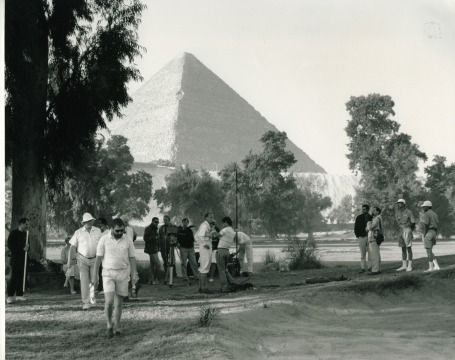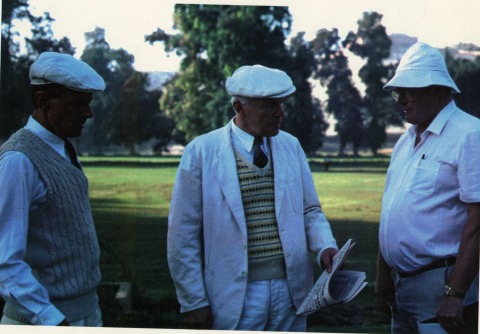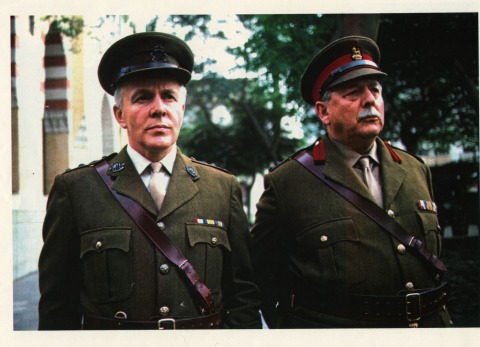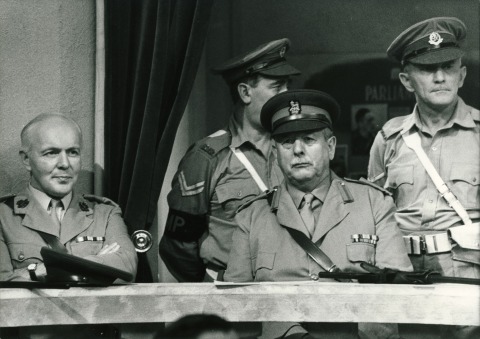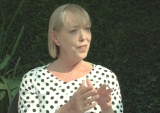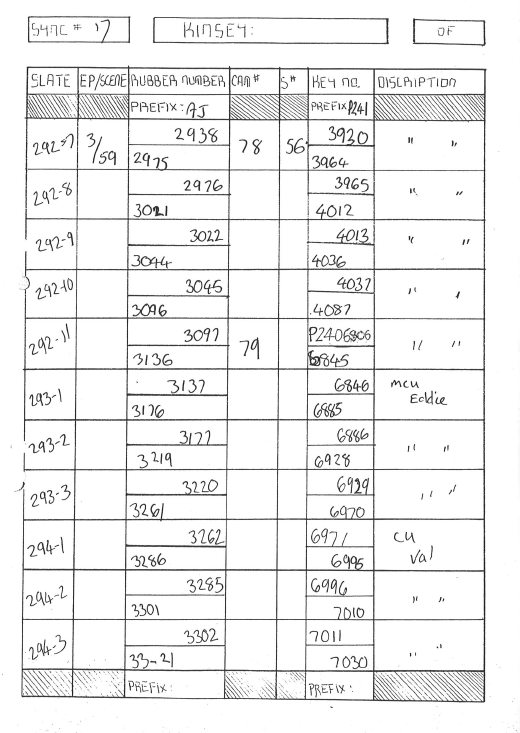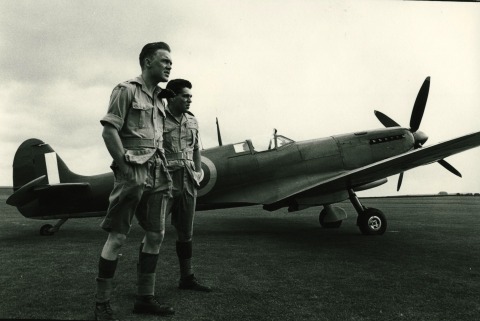
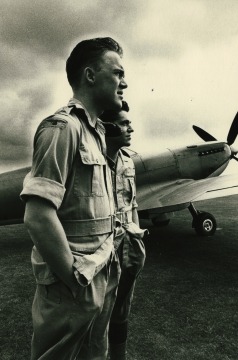
Copyright resides with the original holder, no reproduction without permission.
These publicity photos were almost certainly taken by Willoughby Gullachsen, and were used to publicise the three part drama serial: Vote for Them, written by David Edgar and Neil Grant. The show was transmitted in June 1989. Carol Parks was the producer, Michael Wearing the executive producer, and James Ormerod was the director.
This link to the BBC Genome project gives more information about the drama from the original Radio Times: http://genome.ch.bbc.co.uk/3bc1b6954a074ae7af03e2e03cf40739.
Thanks to costume designer, Janice Rider, for sharing the photos.
The following comments were left on the Pebble Mill Facebook page:
Neil Grant: ‘The aircraft is a Supermarine Spitfire, though not one of the earliest Marks as it has a four bladed propeller. Simon Adams is on the left – he played Aircraftsman “Nobby” Clarke – together with, I think, Peter Llewellyn Williams, who played Aircraftsman Bill Beatty.’
Diane Lester: ‘An early example of a supermarine spitfire. ..we filmed these scenes at an airfield just north of Salisbury, and had a hurricane and other planes there, including an American one. All the planes flew in, and on the last day we filmed with them,the spitfire and hurricane took off and did a victory roll over the airfield ….very spectacular.’
Mary Sanchez: ‘This was my first drama I worked on as a floor assistant (runner) . Having to identify about 100 extras and main characters all in uniform was quite a tall order! A really lovely bunch though.’
Gary Hudson: ‘I’m guessing a Mk IX Spitfire, but experts will know. In 1989 hardly any of the Battle of Britain-era ones were still flying, and I’m assuming this one is authentic (not a replica) and was airworthy, or else how did it get there? Mary, Diana? There were only a couple of Hurricanes flying then, I believe, but again someone will know.’
